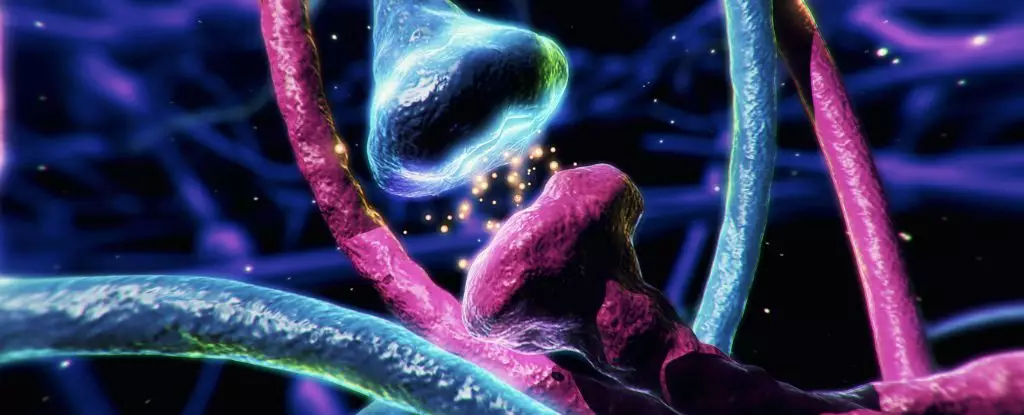For decades, the prevailing narrative surrounding dopamine held that this chemical messenger primarily operated as a widespread broadcast channel, transmitting signals across vast neural networks much like a loudspeaker blaring information indiscriminately. This view painted dopamine as a broad-spectrum modulator, influencing everything from motivation to movement in a sweeping manner. While this model provided a convenient framework for understanding dopamine’s role, it also oversimplified a complex orchestration that seems to defy traditional expectations of chemical signaling.
In dissecting this traditional perspective, it becomes evident that it rests on an assumption that every Dopamine signal is a large, diffuse release, flooding the brain’s circuits with a uniform message. But is this picture too basic? The recent research suggests an entirely different reality: dopamine’s communication might be far more precise, nuanced, and rapid than previously believed, capable of orchestrating a symphony of localized, cell-specific signals that shape behavior and cognition more directly and efficiently than we ever anticipated.
The Discovery of Short, Targeted Dopamine Signals
The groundbreaking studies from institutions like the University of Colorado and Augusta University challenge our core understanding. Using cutting-edge imaging techniques, scientists observed dopamine release at a microscopic level—highlighting that these chemical whispers are not just a myth but a vital feature of neural communication. It appears that, instead of a slow diffusion filling the entire brain with signals, dopamine can be rapidly and precisely targeted to same-neighbor neurons, producing immediate and localized effects.
This subtle yet profound adjustment to our understanding of brain chemistry implies that dopamine may function less like a megaphone and more like a laser pointer, pinpointing specific neurons in milliseconds to fine-tune neural responses. Such targeted signaling could underpin the brain’s ability to manage complex behaviors—moving beyond the simple reward and motivation paradigm—toward a system capable of nuanced, high-resolution control.
This revelation raises critical questions about existing neurobiological models: if dopamine’s signals are both rapid and localized, how did earlier models fail to capture this complexity? The answer likely lies in the limitations of traditional imaging technologies and the depth of our skepticism regarding the system’s both subtlety and sophistication. Now, as these tools evolve, the hidden intricacies of dopamine’s role in brain function are finally coming to light.
Implications for Neurodegenerative and Psychiatric Disorders
Understanding dopamine’s refined signaling mechanisms opens new avenues for tackling some of the most debilitating neurological and psychiatric conditions. Disorders like Parkinson’s, schizophrenia, ADHD, and addiction are intimately associated with dopamine dysregulation, yet treatments have largely been based on broad assumptions about dopamine reduction or excess.
If dopamine functions with such pinpoint precision, then therapies must evolve beyond simply restoring its levels to a general brain-wide state. Instead, targeted interventions might be necessary—aiming to restore or modulate specific neural circuits affected by localized dopamine signals. For instance, Parkinson’s disease, characterized by a degeneration of dopamine-producing neurons in the substantia nigra projecting to the striatum, might be more effectively treated by incorporating strategies that address not just dopamine quantity but also its precise spatial and temporal dynamics.
This shift could revolutionize drug development, moving from blanket approaches that swamp the brain with pharmacological agents to sophisticated, circuit-specific therapies capable of recalibrating the brain’s finely tuned dopamine system. Moreover, a better grasp of how local dopamine signals influence behaviors and pathologies could lead to breakthroughs in understanding how mental illnesses manifest and why current treatments often fall short.
The Larger Question: Are We Underestimating the Brain’s Complexity?
All these discoveries compel us to reconsider how much we truly understand about the brain’s communication network. Dopamine, long portrayed as a simple messenger transmitting broad signals, might be a strategic genius—employing both wide and narrow signals to exert meticulous control. The simplistic models that have dominated neuroscience for so long are no longer sufficient to explain the brain’s remarkable adaptability.
In truth, the brain appears to be orchestrating a highly sophisticated, multi-layered “language,” with dopamine as a master communicator capable of both loud and whispering messages depending on context. This complexity highlights our existing shortcomings: we often rely on outdated assumptions, which hinder our capacity to develop effective therapeutics and interventions.
It’s high time we acknowledged that our understanding of neurotransmitters like dopamine is still primitive. Only by embracing this new paradigm can we hope to unlock the full potential of neuroscience and—perhaps—find cures for the toughest neurological disorders plaguing modern society. As research continues to peel back the layers of this intricate chemical dialogue, one thing is clear: neuroscience still has many secrets to reveal, and those secrets could redefine how we understand ourselves entirely.



Leave a Reply